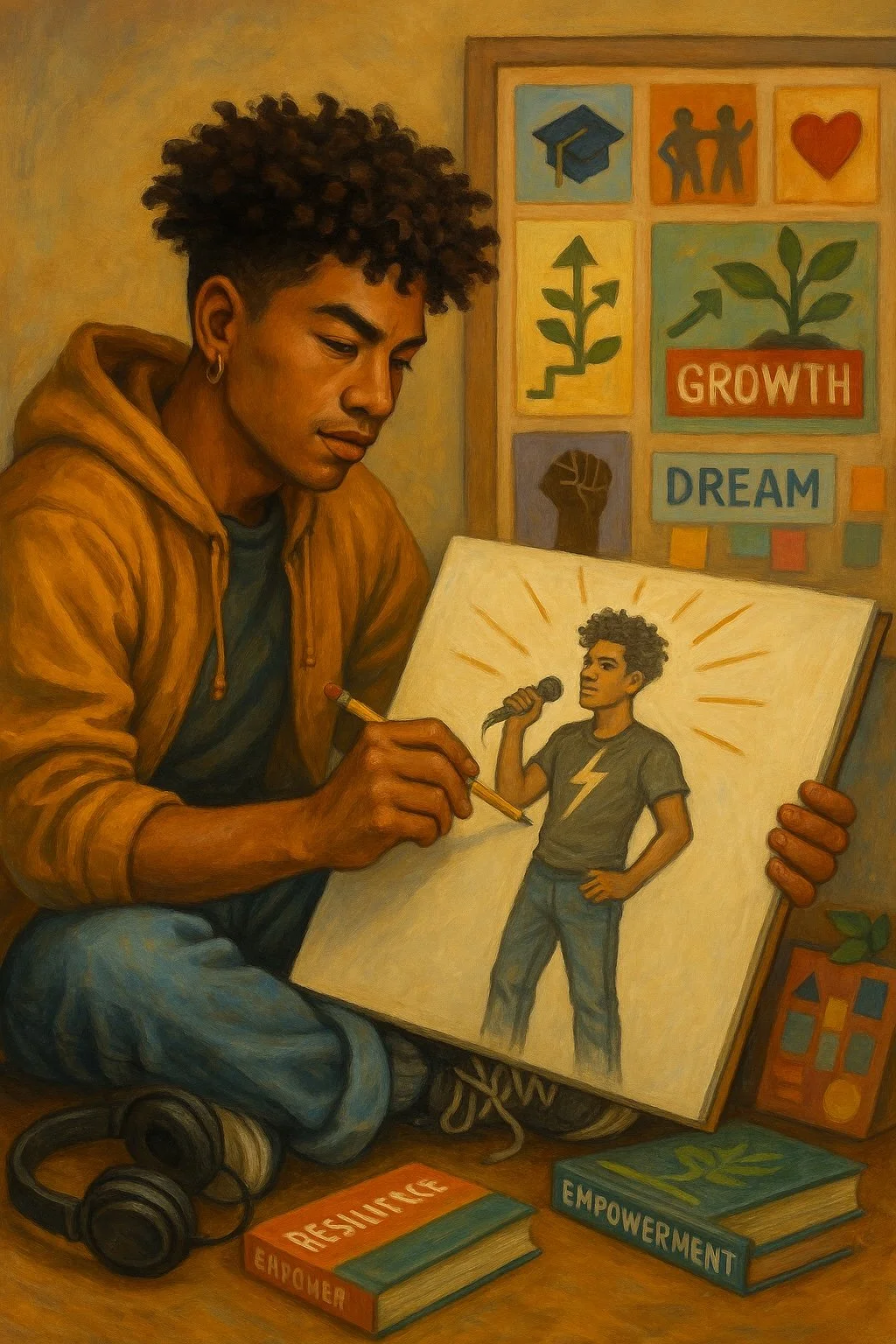Empower Your Voice: The Transformation of Storytelling Coaching
The Opening Line: The Call to Adventure — What Is Storytelling Coaching?
Most people think storytelling is about writing.
Some think it’s about public speaking.
Fewer understand that storytelling is about identity.
Storytelling coaching begins with a question:
Who are you when no one is scripting you?
It’s not a trick question, but it’s one most of us were never taught to ask—let alone answer. Instead, we’re often handed other people’s narratives: what to say, who to become, what success should look like. Before we’ve even found our voice, the world tries to fill in our lines.
Storytelling coaching interrupts that. It creates a space where reflection, agency, and language come back into your hands. It’s not about performance—it’s about becoming. It’s a process of witnessing yourself, naming what you’ve lived through, and realizing that your story has always mattered.
At its core, storytelling coaching is identity work. It’s not just about crafting a message—it’s about meeting yourself. It invites you to explore the intersections of your culture, your values, your dreams, and your truth. It’s about reclaiming authorship over your life, especially in a world that often edits your story before you’ve finished living it.
Chapter One: Charting Your Backstory — Exercises to Unearth Key Moments
Before any story can move forward, it must pause long enough to understand where it’s been.
Storytelling coaching doesn’t rush you into “the right words.” It invites you into honest conversations—with yourself and others. The kind of conversations that take time. The kind that ask:
What’s shaped you? What have you been carrying? What are you ready to release?
Too often, we’re taught to skip over our lives like they’re bullet points on a résumé. But stories aren’t checklists. They’re messy, layered, and alive.
Sometimes the hard moments overshadow the good. The struggle gets the spotlight, while joy, resistance, and growth stay behind the curtain. Coaching helps you bring all of it into view—not just the trauma, but the tenderness. Not just the losses, but the lessons.
Here, reflection becomes a ritual. Through deep reflection, conversation and dialogue, you begin to uncover what your story is really made of—not what’s expected of you, but what’s true to you. This is the archive of becoming. And it’s sacred.
Chapter Two: Facing the Dragon — Turning Vulnerabilities into Strengths
Every story has a turning point.
That moment when the main character stops running from the wound—and starts learning from it.
Storytelling coaching makes space for this transformation. Not by forcing you to relive your pain, but by helping you reshape it.
This work teaches you how to name the hard things—not for shock or sympathy, but for freedom. It helps you turn fear into fuel. It asks:
How have your struggles shaped your strengths?
What truths have you had to fight to believe about yourself?
In session, vulnerability becomes more than just an emotional moment. It becomes a skill. You learn how to share your story with power and boundaries. You learn how to stay rooted while being real. You learn how to speak from the scar, not the open wound.
And through it all, you stop seeing your story as something to hide.
You begin to see it as evidence of your resilience.
Proof that you’ve already faced the dragon—and made it through.
Chapter Three: Claiming the Trophy — Public Speaking & Presentation
Once the story is understood and owned, it’s time to share it. But telling your truth out loud isn’t just about writing a good speech or essay—it’s about embodying your story.
Storytelling coaching helps you move from idea to articulation. It bridges the gap between what you feel and what you say. Whether you’re preparing for a college interview, performance, panel, or personal statement, coaching supports both your structure and your spirit.
You learn:
How to shape a story with clarity and heart
How to speak with presence and purpose
How to calm the nervousness that comes with being seen
How to tell your truth without shrinking it
Because the goal isn’t perfection—it’s connection.
And that connection can only happen when your story sounds like you.
This is where the internal journey meets the external world. It’s where you stop whispering your truth—and start sharing it out loud, with confidence and care.
Chapter Four: Joining the Fellowship — Community & Ongoing Support
Stories ripple. When one person dares to speak honestly, it opens the door for others to do the same.
Storytelling coaching isn’t just about the individual voice—it’s about collective transformation. And one of the most powerful parts of the journey is what happens when stories are shared in community.
When we tell our truths in safe, supported spaces, we experience:
Recognition: “I thought I was the only one.”
Belonging: “You see me.”
Reflection: “Your story helped me understand mine.”
Whether it’s a conversation, group workshop, a peer circle, or a shared performance space, community storytelling deepens healing. It reminds us that we’re not alone—and never were. It shows us that our stories don’t just matter for us, but for the people who need to hear them.
In the end, the voice you reclaim becomes part of something bigger. You go from being the one who needed the light—to becoming the one who shines it for others.
Final Reflection: You Are the Story
Storytelling coaching isn’t a one-time process. It’s a lifelong practice of asking:
Who am I now? What have I lived through? What am I stepping into next?
It reminds you that your story is still being written—and that you have the right to write it in your own language, on your own terms.
So if you’re feeling stuck between chapters, unsure of the words, or overwhelmed by the noise of everyone else’s expectations—pause.
Take a breath.
Then ask yourself the real question:
What story do I want to live next?
You don’t need permission. You just need someone to remind you:
You’ve been the author all along.
Edited with support from ChatGPT (OpenAI) to enhance clarity and flow, while staying true to the story’s voice.
All images in this post were generated using OpenAI’s DALL·E image model via ChatGPT.


